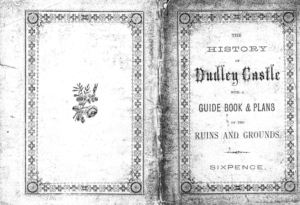
Contents
About Dudley
Dudley has a history dating back to Anglo-Saxon times, its name deriving from the Old English Duddan Leah, meaning Dudda’s clearing, and one of its churches being named in honour of the Anglo-Saxon King and Saint, Edmund.
Mentioned in the Domesday Book as Dudelei, in the hundred of Clent in Worcestershire, the town was listed as being a medium-sized manor in the possession of Earl Edwin of Mercia prior to the Norman Conquest, with William Fitz-Ansculf as Lord of the Manor in 1086. Dudley Castle, constructed in 1070 by William’s father Ansculf de Picquigny after his acquisition of the town, served as the seat of the extensive Barony of Dudley, which possessed estates in eleven different counties across England.
Of historical significance, the town was attacked by King Stephen in 1138, after a failed siege of the castle following the Baron’s decision to support Empress Matilda’s claim to the throne during The Anarchy.
History
Early History
Dudley has a history dating back to Anglo-Saxon times, its name deriving from the Old English Duddan Leah, meaning Dudda’s clearing, and one of its churches being named in honour of the Anglo-Saxon King and Saint, Edmund.
Mentioned in the Domesday Book as Dudelei, in the hundred of Clent in Worcestershire, the town was listed as being a medium-sized manor in the possession of Earl Edwin of Mercia prior to the Norman Conquest, with William Fitz-Ansculf as Lord of the Manor in 1086. Dudley Castle, constructed in 1070 by William’s father Ansculf de Picquigny after his acquisition of the town, served as the seat of the extensive Barony of Dudley, which possessed estates in eleven different counties across England.
Of historical significance, the town was attacked by King Stephen in 1138, after a failed siege of the castle following the Baron’s decision to support Empress Matilda’s claim to the throne during The Anarchy.
Early Modern And Industrial Revolution
By the early 16th century the Dudley estate, now held by the Sutton family, had become severely in debt and was first mortgaged to distant relative John Dudley, Duke of Northumberland, before being sold outright in 1535. Following Dudley’s execution in 1553, the estate returned to the Sutton family, during whose ownership the town was visited by Queen Elizabeth during a tour of England.
In 1605, conspirators of the Gunpowder Plot fled to Holbeche House in nearby Wall Heath, where they were defeated and captured by the forces of the Sheriff of Worcestershire.
During the English Civil, War Dudley served as a Royalist stronghold, with the castle besieged twice by the Parliamentarians and later partly demolished on the orders of the Government after the Royalist surrender. It is also from around this time that the oldest excavated condoms, found in the remains of Dudley Castle, were believed to have originated.
Dudley had become an incredibly impoverished place during the 16th and 17th centuries, but the advent of the Industrial Revolution began to reverse this trend. In the early 17th century, Dud Dudley, an illegitimate son of Edward Sutton, 5th Baron Dudley and Elizabeth Tomlinson, devised a method of smelting Iron ore using coke at his father’s works in Cradley and Pensnett Chase, though his trade was unsuccessful due to circumstances of the time. Abraham Darby was descended from Dud Dudley’s sister, Jane, and was the first person to produce iron commercially using coke instead of charcoal at his works in Coalbrookdale, Shropshire in 1709. Abraham Darby was born near Wrens Nest Hill near the town of Dudley and it is claimed that he may have known about Dud Dudley’s earlier work.
Dud Dudley’s discovery, together with improvements to the local road network and the construction of the Dudley Canal, made Dudley into an important industrial and commercial centre. The first Newcomen steam engine, used to pump water from the mines of the Lord Dudley’s estates, was installed at the Conygree coal works a mile east of Dudley Castle in 1712, though this is challenged by Wolverhampton, which also claims to have been the location of the first working Newcomen engine.
Read more here.
The above articles were sourced from Wikipedia and are subject to change.
Blog Posts
Downloads
The following Dudley Zoo & Castle leaflets are available to download in PDF format. There is a link to a free PDF reader below if you don’t have one.





Links
philwild on Pixabay – The image shown at the top of this page is the copyright of philwild. You can find more great work from the photographer Phil and lots more free stock photo’s at Pixabay.
Dudley Zoo & Castle – Official website. The images shown above are copyright of Dudley Zoo And Castle. They run as a not for profit charity relying on ticket sales in order to operate and care for more than 1300 animals, and has nigh on 200 species, including some of the rarest creatures on Planet Earth. Please consider donating to them if you can as well as purchasing tickets to visit.
Note: I am not affiliated with Dudley Zoo & Castle whatsoever. I simply want to raise awareness to help in any way I can.
Adobe Acrobat DC Reader – This PDF reader from Adobe is the free global standard for reliably viewing, printing, and commenting on PDF documents.